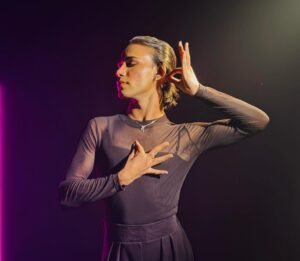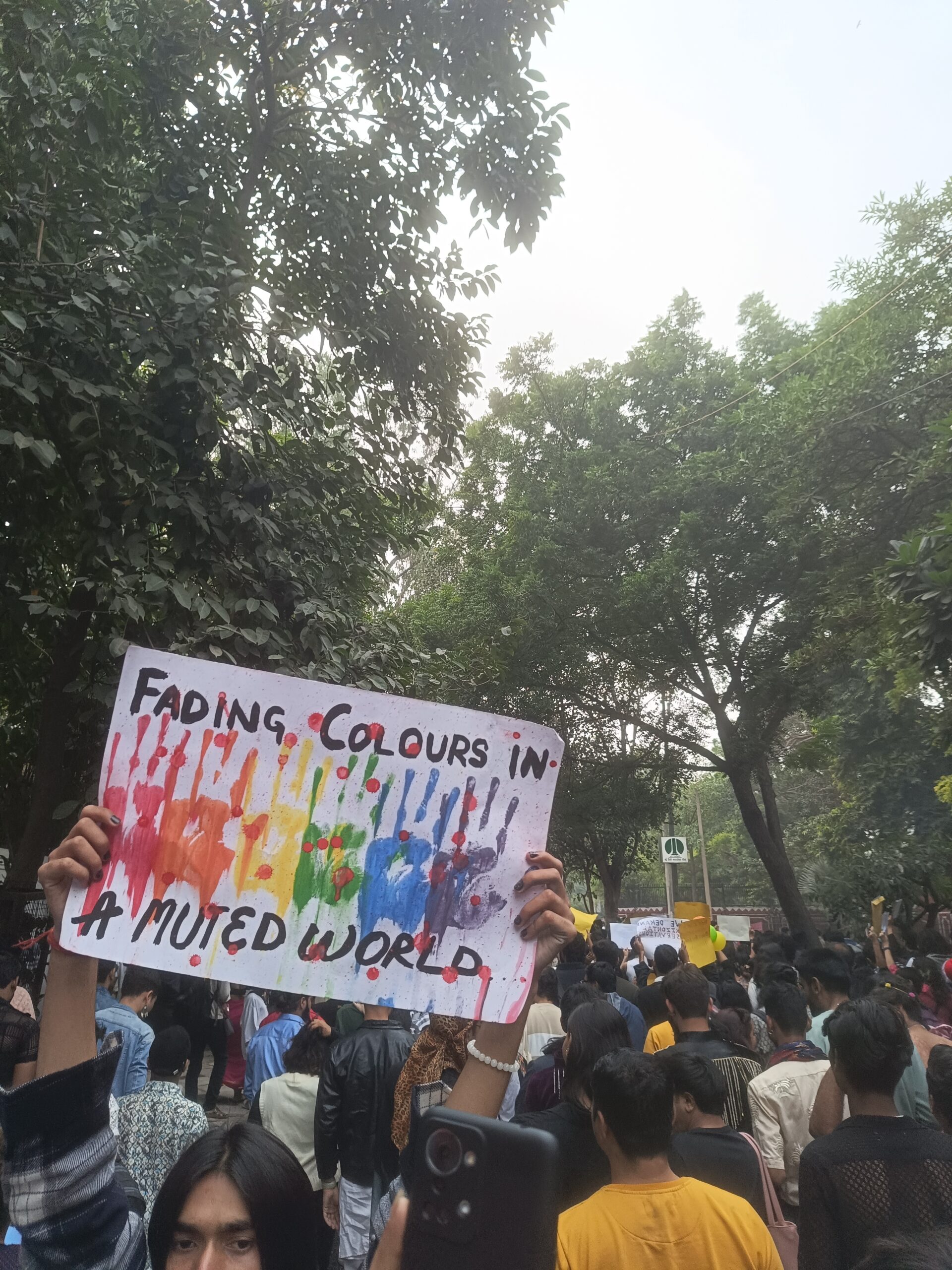
RLV Ramakrishnan Photo: RLV
The recent uproar surrounding classical dancer Kalamandalam Sathyabhama’s casteist and colourist remarks against fellow Mohiniyattam artist RLV Ramakrishnan has once again exposed the deep-rooted gender discrimination that pervades the world of Indian classical dance. Sathyabhama’s assertions that the beloved art form should be performed only by “fair-skinned, good-looking men,” preferably young, coupled with her disparaging comments about Ramakrishnan’s “crow-coloured dark skin,” sparked widespread outrage across Kerala society.
However, beyond the blatant casteism and colourism, Sathyabhama’s statements reflect a deeper, more insidious prejudice – the stigmatisation of men who dare to embrace the grace and femininity inherent in classical Indian dance forms. Her words echo the entrenched patriarchal notions that seek to confine men within rigid boundaries of “masculinity,” rejecting any expression that deviates from prescribed gender norms.
For male classical dancers like Ramakrishnan and countless others, the battle is not merely about pursuing their passion; it is a fight to reclaim their dignity and challenge the deeply ingrained gender stereotypes that constantly seek to undermine their chosen path. The consequences of this struggle extend far beyond the realms of art and culture, reverberating throughout society and impacting the lives of countless individuals, particularly those within the LGBTQIA+ community.
“I eat, sleep and breathe this art form,” Ramakrishnan asserted, his credentials – a diploma, post-diploma, M Phil, NET, and Ph D in Mohiniyattam – a testament to his unwavering dedication. Yet, his journey has been fraught with obstacles, rooted in the very fabric of a society that remains stubbornly heteronormative and resistant to embracing diverse gender expressions.The harsh reality is that men who choose to pursue classical dance forms are often subjected to relentless mockery and discrimination, their passion perceived as a transgression against the rigid constructs of masculinity. Spectators anticipate women performing soft, graceful movements, while men are expected to exhibit strength and ruggedness. This narrow-minded perception fails to recognize the multifaceted nature of art and the transcendent power of dance to bridge gender divides.
“By embodying both male and female roles on stage, male dancers gain a deeper understanding of the female perspective, transcending gender boundaries with each graceful movement,” explained R Kumaran, 28, a queer Bharatnatyam dancer who is now working in Bengaluru as a dance teacher in a school. “It’s a journey of self-discovery and empathy, where art becomes a bridge between disparate worlds, and stereotypes are shattered under the weight of shared humanity.”
Yet, the prejudice runs deeper than mere societal perceptions. Kumaran, a dancer for 18 years, highlighted the insidious nature of online harassment, where the cloak of anonymity emboldens trolls to spew hateful comments without fear of consequence. “You are uploading a video, and henceforth you have no control over it. It’s out there for the world without regulation, so anyone can jump in,” he lamented.

Ranodip Biswas Photo: Biswas
The backlash against male classical dancers is not merely an artistic issue; it is a manifestation of the deeply ingrained patriarchal mindset that permeates Indian society. For those who identify as part of the LGBTQIA+ community, the consequences can be particularly severe. The story of Ranodip Biswas, a young classical dancer from Kolkata, exemplifies the harsh realities faced by queer individuals in the arts. Despite his immense talent and dedication to the art of Kathak, Biswas has been subjected to relentless online bullying and harassment, with trolls hurling homophobic slurs and demeaning comments whenever he shares clips of his performances on social media.
“It’s heartbreaking to see the hateful comments people leave on my posts,” Biswas shared, his voice tinged with a mixture of sadness and resilience. “They mock me for being a man who dances, calling me derogatory names and questioning my masculinity. It’s as if they can’t fathom the idea of a man embracing the grace and beauty of classical dance. My identity as a queer person gives them more ammunition to attack me.”
Biswas’s experience is a microcosm of the broader challenges faced by the LGBTQIA+ community in a society that remains deeply entrenched in patriarchal values and heteronormative ideals. When society dictates that men must conform to narrow definitions of masculinity, those who identify as gay, transgender, or non-binary face increased marginalization and discrimination. Their very existence is seen as a challenge to the patriarchal order, and they are often subjected to violence, harassment, and exclusion.
“It’s not just about the trolling,” Biswas continued. “It’s about the constant struggle to be seen and accepted for who we are. Every time I step on stage, I’m not just dancing; I’m fighting to break down the barriers that have confined us for far too long.”
A fight for acceptance
Varsha*, 21, a practising queer Kuchipudi dancer at his college and an integral part of their classical dance society shares his insights on how the gender aspect of this whole fiasco is so integral to discuss and on how to dance as a liberating space is being compromised. He emphasises the need for a holistic approach to combating these deep-rooted biases. “It is important to understand the nuances of how these comments by Sathyabhama are subjugatory in nature, not only to the dancer but also to the liberating aspect of that particular dance form.”
“The discrimination and oppression faced by the LGBTQ+ community are not isolated incidents; they are symptoms of a larger societal malaise rooted in patriarchal values and rigid gender norms,” Varsha explained. “We must challenge these oppressive structures on multiple fronts – through education, activism, and legal reform – to create a society that truly embraces diversity and celebrates the richness of human expression.”
One of the key battlegrounds in this fight is the online sphere, where anonymity often breeds toxicity and hate. Social media platforms have become breeding grounds for harassment and bullying, with trolls emboldened by the perceived anonymity of the digital world. Activists and advocates are calling for greater accountability and moderation on these platforms, as well as initiatives to promote digital literacy and counter the spread of misinformation and hate speech.
“The internet has the power to connect and empower marginalized communities, but it can also be a tool for perpetuating hatred and discrimination,” Varsha stated. “We must work to create safer online spaces where individuals can express themselves freely without fear of harassment or abuse.”
A holistic approach to liberation
Fortunately, there are glimmers of hope amidst the darkness. The Kerala Kalamandalam Deemed University recently lifted gender restrictions for admission to its Mohiniyattam course, a decision that arrived in the wake of Sathyabhama’s controversial remarks.
However, true progress cannot be achieved through institutional reforms alone. It requires a fundamental shift in societal attitudes, a collective embrace of diversity, and a willingness to challenge the deeply entrenched biases that have constrained individual expression for far too long.
By embracing the diversity of human experience and recognizing the inherent beauty in every form of artistic expression, we can dismantle the oppressive structures that have long stifled the voices of male classical dancers, members of the LGBTQ+ community, and countless others. Only then we can truly celebrate the rich tapestry of Indian culture, where grace and strength intertwine, and gender is no longer a barrier to artistic fulfilment or personal authenticity.
It is a journey that requires patience, empathy, and a relentless commitment to fostering a society that celebrates diversity in all its forms. As Ranodip Biswas poignantly stated, “Every time I step on stage, I’m not just dancing; I’m fighting to break down the barriers that have confined us for far too long.” It is a rallying cry for all those who seek to unshackle the human spirit from the chains of oppression, allowing each individual to embrace their authentic self and contribute their unique voice to the tapestry of human expression.
For as long as individuals like Ramakrishnan, Biswas, and countless others continue to face discrimination and marginalization, the fight for equality and acceptance must persist. Their resilience and determination serve as a beacon of hope, illuminating the path towards a future where art, expression, and identity are liberated from the confines of outdated societal norms.
In the words of Varsha, “The struggle for LGBTQ+ rights is not just a fight for a marginalized community; it is a fight for the fundamental dignity and humanity that we all deserve. When we embrace diversity and challenge oppressive systems, we not only empower those who have been silenced, but we also pave the way for a more just and compassionate world for all.”
*(Some names have been changed to protect privacy)



